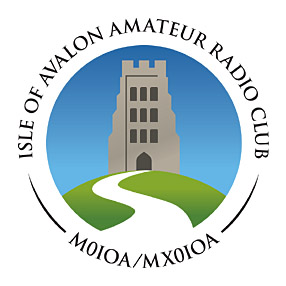SW daytime Data Net results, 14th Dec
This is a follow-up to the 80m SW wide net, it was a lot more successful than the last Tuesday evening’s attempt. All stations were able to copy each other, there was some fading so copy was very readable but not 100% all the time. We were able to switch to the Olivia 8/500 mode which is notably faster. We did not try Contestia. Olivia 8/500 is about as fast as I can cope with manually ;) There is still some latency, but I did not feel that it impaired the operation of the net significantly.
I would say that this seems to support the hypothesis that a SW data net would be possible at this time of day using this frequency. Stations are still clustered around the Somerset region, but with the Mendip hills in the way I would guess that the great improvement in reliability compared to last Tuesday evening's results is due to using NVIS.
The F2 layer is a couple of hundred km high or more, so for a SW regional net the path length increase from one end to the other is not a huge portion of the RF path round-trip. The critical frequency remained suitably above the 80m band for the net. Radcom May 2009 has an article on interpreting ionosonde data

I have posted the ionograms for the start time of the net and that for 20:00 on the same day.
In my view the 80m frequency and the Olivia 8/500 mode are a good way forward. It would be worth testing with a station further away in the southwest to confirm NVIS contacts from one end of the region to the other. The daytime requirement is an issue. I’ll pass it over to G4JJP to establish if and how to deploy this for WessexHam.
Propagation is notoriously variable, and we have been optimising for midwinter and a quiet part of the solar cycle. Higher bands will become more useful in the summer. However, it’s quite a jump from 80m to 40m - although the original amateur radio bands were harmonically related, the WARC bands give us finer frequency gradations in between most of the HF bands, but not between 80m and 40m. The bandlets on 60m do give us an allocation in between, but since this is restricted to Full licensees in the UK it’s not good for a net because it will exclude a fair part of the amateur population from participating.
Map of stations
Note that locations are approximate, derived from the locator in many cases
Signal reports
| Call/Name | loc (PWR) | Notes | G7LEE | G4JJP | G4OTJ | G8DMN | 2E0GHE | M0JII |
|---|---|---|---|---|---|---|---|---|
| G7LEE / Richard | IO81pd (30) | horiz FW loop QRM S7 | -.5 | 16.7 | 2 | 4.5 | -.3 | |
| G4JJP / Richard | IO81re (25) | EFHW invL | 8 | 5.5 | 9.3 | -4 | 4 | |
| G4OTJ / John | IO81rh (50) | dipole | 6 | -12 | -3 | -4 | 4 | |
| G8DMN / Simon | IO81rd (30) | 1.4 wave in V @ 6m | 9 | 6 | 4 | 4 | 6 | |
| 2E0GHE / Jason | Bristol (25) | EFHW | 2 | -1 | 16 | 11.5 | ||
| M0JII / Tony | IO81md (50) | 40m longwire | -11 | copy | copy | copy | copy |
Fading
There was significant fading between myself and Tony - perhaps this is due to interference between the NVIS path and the ground wave, as the terrain between us is the low-lying Somerset Levels. This did lead to some data corruption
EE de M0JII might i ask how much power {Quse bty lee m0jii?h1F}
M0JII de G7LEE I am using about 30W into a horizontal full-wave loop about 5m AGL BTU M0JII de G7LEE +
cdG7LEE de M0JII
Richard, my station Radio : Yaesu ft 991a, Software : HRD + DM780 Power: 50W. 50W. Antenna: 40.56m long wire/ x300. 35 feet ASL. s/n:-1 6c;?13dB
BTU G7LEE de M0JII kn
Whereas what Tony sent was
G7LEE de MØJII might i ask how much power i can use bty lee mØjii k
MØJII de G7LEE
I am using about 3ØW into a horizontal full-wave loop about 5m AGL BTU
MØJII de G7LEE +
G7LEE de MØJII
Richard, my station
Radio : Yaesu ft 991a,
Software : HRD + DM78Ø
Power: 5ØW. 5ØW.
Antenna: 4Ø.56m long wire/ x3ØØ. 35 feet ASL.
s/n:-13dB. -13dB
BTU G7LEE de MØJII kn
and fading affected other nearby stations - it is clearer to see on G4JJP’s signal because it is stronger

Chilton Ionosonde at 13:00 - start of the net

Contrast this with the ionogram for 20:00

